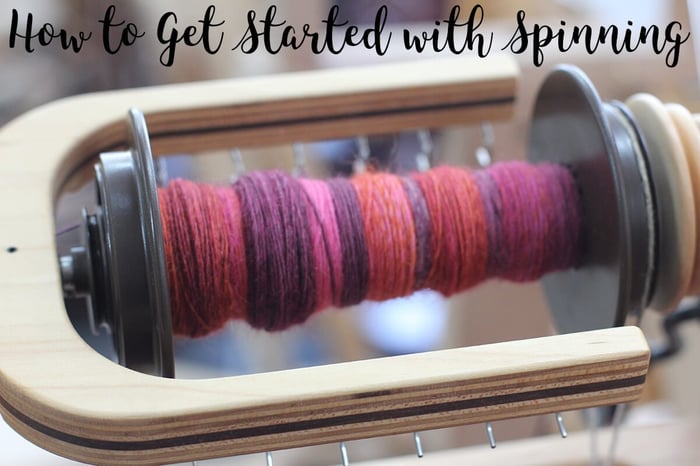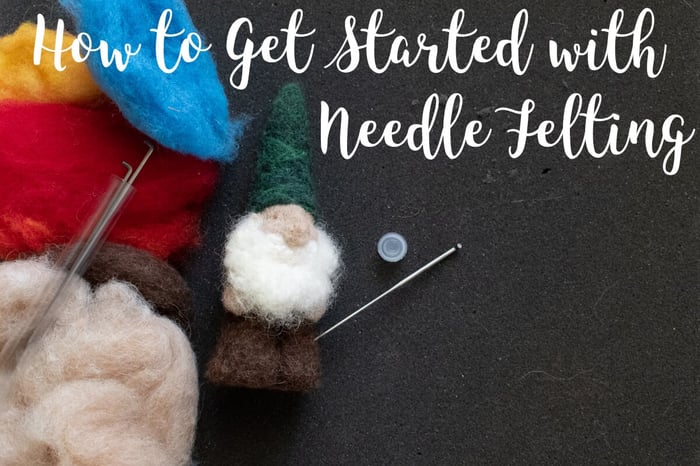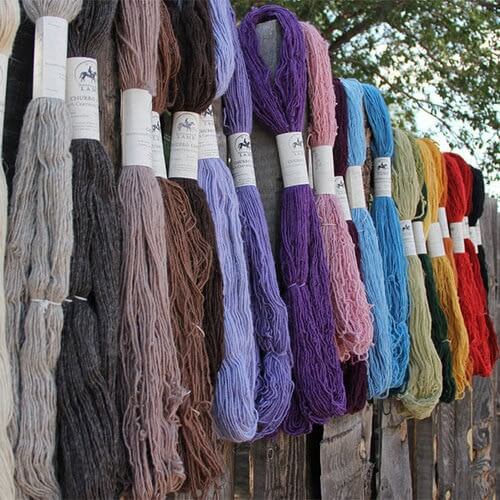Our Blog

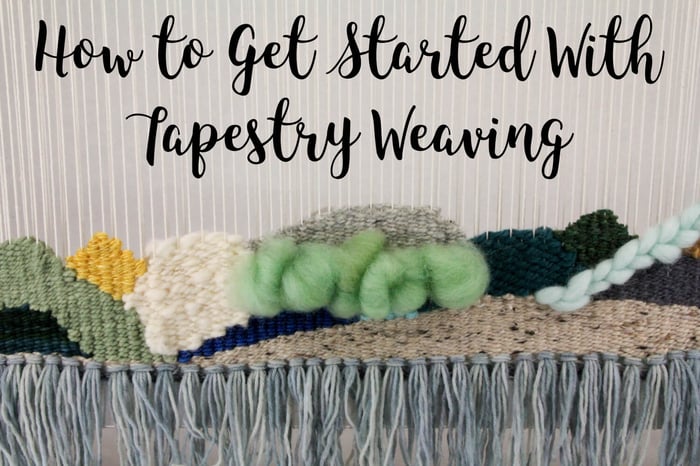
How To Get Started With Tapestry Weaving
We have been getting lots of questions from folks wanting to try out new crafts now that most of us are spending a lot more time at home. We're excited that lots of new fiber artists are going to enter the world! Since we're getting so many questions we decided to make a series of blog posts with some basic info to start you off with several different fiber craft disciplines! This week we're going to cover: Tapestry Weaving!
Tapestry weaving is weft-faced weaving, which means that all of the warp threads are hidden inside the weft threads and are not not visible in the finished piece. Various colors of weft thread are passed over and under the warp to create a pattern or image. This method of weaving is done on a tapestry or frame loom, where not only is the maximum width of the piece determined by the size of the loom (as in all weaving) but the maximum length is also a factor. The best use for tapestry woven pieces is decorative! Of course any cloth can really be used for any purpose but because tapestry weaving does not create a balanced cloth, we don't recommend it for garments.
At The Woolery we often recommend tapestry weaving to newbie weavers who want to jump into weaving but don't want too large of an invest in a new hobby. Beginner tapestry looms can be very small and affordable, and are perfect or giving weaving a test drive!

Starting With A Kit
We carry a few different tapestry weaving kits that contain everything you will need to complete a project, even the yarn! If you don't want to have to make a bunch of small choice about the types of accessories you would like to choose then these are a great place to start.
- Harrisville Lap Loom A and Harrisville Lap Loom B, these are basically the same just different sizes. This is our favorite kit to recommend to kids (ages 7+) who want to get into weaving. The kits come with warp yarn, weft yarn, instructions, shuttles, needles, and the actual loom so you will be all set to make your first project!
- Pop Out Loom and Tools Kit, this is fun because your entire loom comes flat on a piece of wood that you then get to pop out along with all your tools! There are five different color packs for you to choose from for weft yarn. It also comes with a handy instructional booklet. You will probably want to purchase cotton yarn for your warp separately, as the yarn that comes with is not ideal for warping.
- Ashford Weaving Starter Kit Brights and Monochrome, we love these Weaving Starter Kits from Ashford. They contain absolutely everything you need to make your first project, and the actual loom is very high quality so you will be using it for many projects to come. They also come with instructional booklets to get you started on the right foot.
Starting On Your Own
If you're wanting to get into tapestry weaving because you have a stash of scrap yarn to use up, you might not want to purchase a kit that comes with yarn! Maybe you already have color schemes and designs planned out in your head so you're not needing inspiration from a preassembled kit. Things you'll need are, a loom, tapestry beater, stick shuttle or weaving needle, warp yarn, and weft yarn. You might want a shed stick, or tapestry bobbins. Some looms will come with the accessories you need, we'll let out know if they come with any bonus tools below.
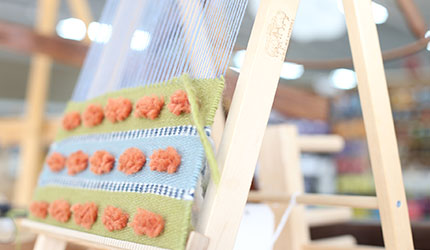
Mini Looms
These are very small tapestry looms to make mini tapestry pieces with.
- Made Kits Small Tapestry Weaving Kit, this small loom comes with all of those little accessories that we mentioned above, just add yarn and you're all set. This loom is tiny enough to pop in a purse for on the go weaving.
- Schacht Easel Weaver Kit, comes in 3 different sizes, 6", 8", 10" so you can choose your adventure. This kit comes with all of the tools you will need to start weaving.
Larger Looms
These are going to have a bit more size to them if you want to make larger wall hanging style pieces.
- Schacht School Loom, a nice simple loom if you're looking to make larger projects but want to keep your budget under $100. It comes with a lot of the small tools you'll need but it is likely you'll want to pick up some tapestry bobbins.
- Ashford Weaving Frame, another great simple loom with a larger area to work with for not a large budget. This one does not include any tools so you'll need to get, a beater, shuttles, etc, separately.
- Harrisville Friendly Tapestry Loom, large tapestry loom that comes with a floor stand so you can work comfortably without holding up a big loom. You will need to purchase tools separately.
- Mirrix Looms, Mirrix is kind of like the Cadillac of tapestry weaving. Their looms are metal, so very strong, they have springs so you can change the dent size (work with many different sizes of yarn). They have a shedding device to make weaving quicker. You can use them for bead weaving and they are all around very versatile. We would not recommend them to a beginner who wants to just try out tapestry weaving for fun, but if you're looking to make an investment in a high quality piece of equipment that you will use extensively and for many years, these are a great option.
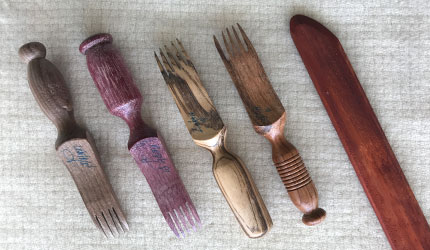
Tapestry Beaters
A tapestry beater is basically a glorified fancy comb, you use these to push your weft threads down to make your work even.
- Schacht Tapestry Beaters, these come in three different styles so you can choose the one most appropriate one for how you hold your beater.
- Ashford Tapestry Beater, a very high quality tool with a comfortable handle.
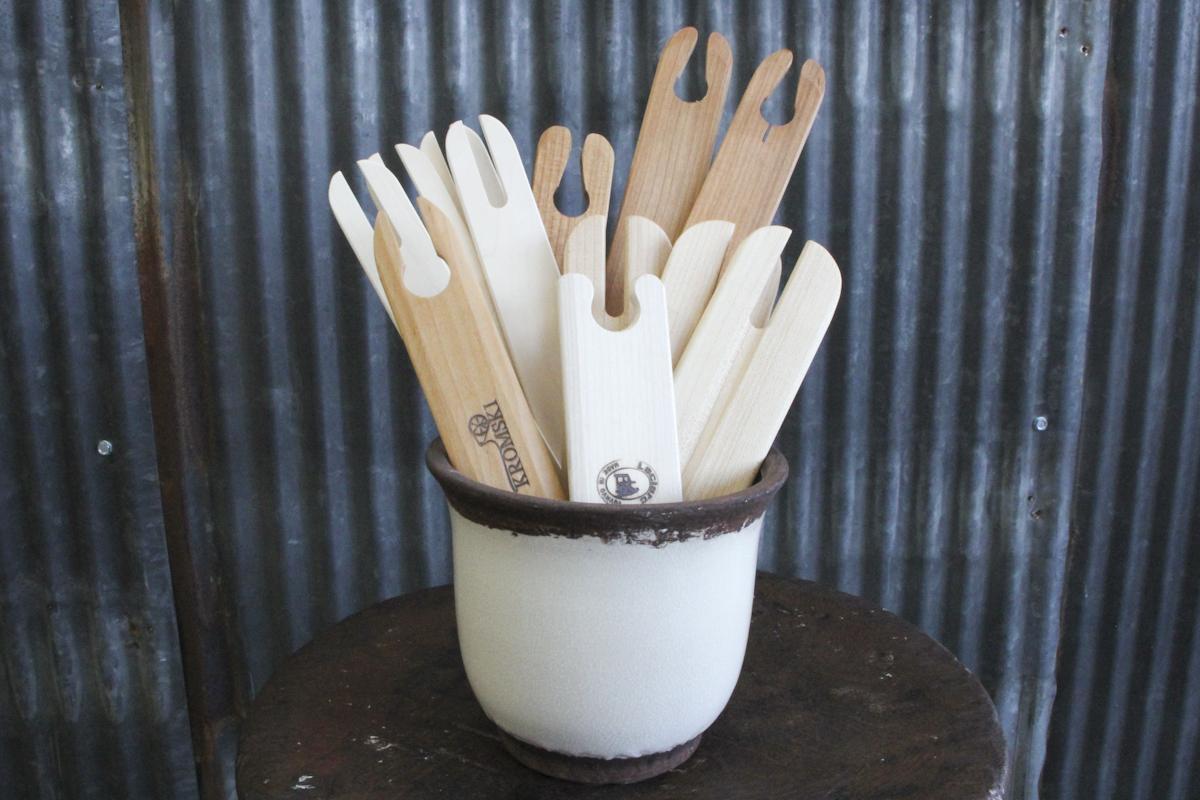
Stick Shuttle, Tapestry Needle, or Tapestry Bobbin
These are all of your options for carrying the weft yarn over and under your warp threads. Which one you want to use is really down to personal preference. You may want to go with the stick shuttle for larger projects, and tapestry bobbins for projects where you're going to be switching colors frequently, but again, it's really all down to personal preference.
- Kromski Stick Shuttle, we carry a huge variety of stick shuttles. Really all that is important is picking one that is the right size (about the width of your project) and if you like the look of it.
- Rosie's Tapestry Needle, really any tapestry needle will work for tapestry weaving as long as your needle eye is large enough for the yarn to slide through, and your needle end isn't pointy enough to be constantly splitting your warp.
- Tapestry Bobbin, these function similarly to tapestry needle but you can wrap a large chunk of yarn around the skinny bit of your needle so you don't have to work with a long tail. If you're working with many different colors it's nice to have several of these loaded up so you can just leave them hanging off the project or off to the side while you work with other colors.
- Schacht 3-in-1 Magic Stick, this is a beater, weaving needle, and pick up stick all in one, so it's a great option if you don't want to have multiple small tools around.
Warp Yarn
Our go-to suggestion for warp yarn for tapestry weaving is cotton, because it needs to be very strong and hold up well to abrasion.
- Maysville 8/4 Cotton Rug Warp Yarn, comes in a variety of colors (which you might want if you're going to some fancy tricks like leaving bits of your warp open), and is going to hold up great for tapestry projects.
- Maysville 4/4 Cotton Rug Warp Yarn, a thicker, undyed version of the yarn above.
- Cotton Seine Twine Rug Warp, an option for smaller setts. It is probably too thin for many of the smaller beginner looms we mention above.
- Linen Rug Warp Yarn 8/4, if you're wanting an option that isn't cotton, this linen should behave in a similar fashion.
Weft Yarn
Really any yarn can be weft yarn, and one of our favorite to find weft yarn is in our scrap stashes! Remember the thinner the yarn the longer it will take you to weave the piece.
- Brown Sheep Nature Spun Sport and Worsted, these come in a huge variety of colors and nice small 50g balls so you can get a whole rainbow without having an overwhelming amount of yardage.
- Halcyon Yarn Rug Wool, a thicker yarn that will weave up very quickly and create very strong hardwearing projects.
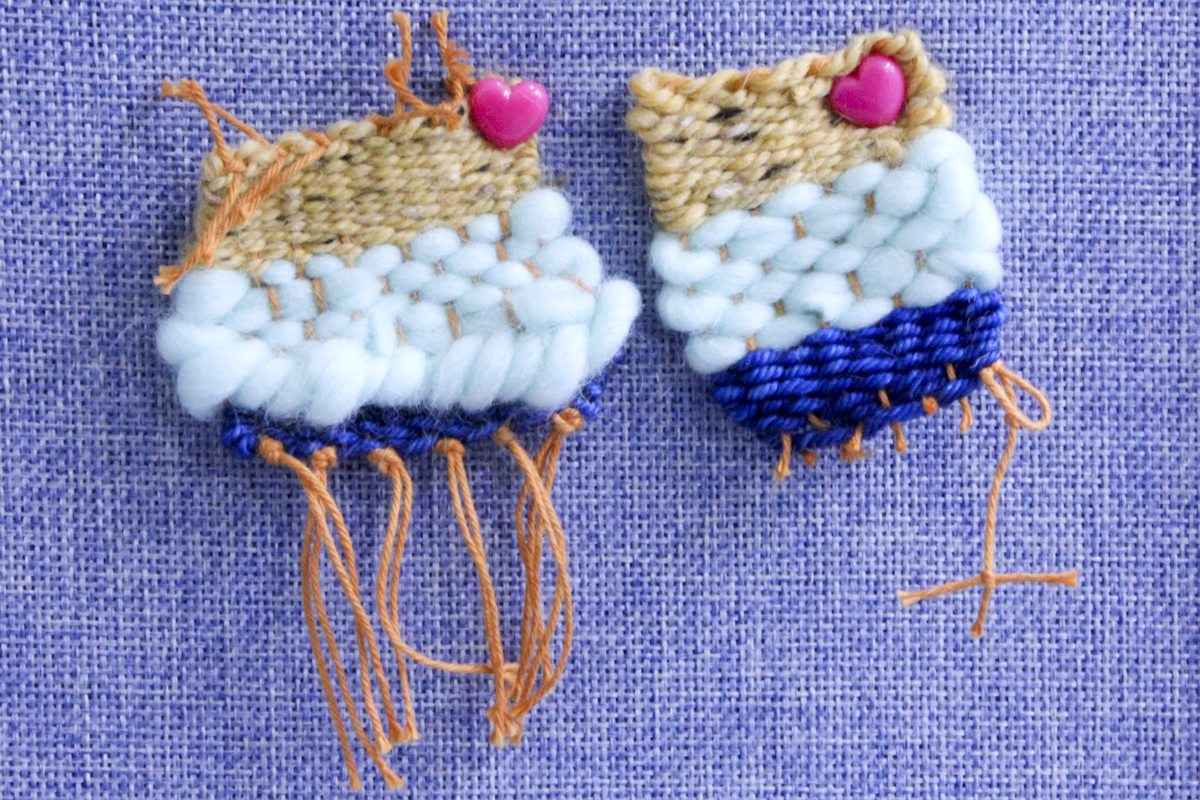
Further Reading
We have a whole series all about tapestry weaving that we have previously ran on our blog! Find the posts here:
- Tapestry Weaving Adventure, all about planning color and picking yarns from your stash.
- Sampling and Sketching, why making a sample is important and planning before you start weaving might be a good plan!
- Add Texture to Your Tapestry Weaving, some techniques to add an extra punch of texture to your project!
- Tapestry Finishing, how to finish your tapestry weaving project.
Books
You know we love books, here are some of our picks for tapestry weaving!
- Art of Tapestry Weaving by Rebecca Mezoff - Rebecca Mezoff, a renowned teacher of contemporary tapestry weaving, shares her techniques in this in-depth guide to every aspect of the process, from developing a color palette to selecting yarn, warping the loom, and weaving the image. Detailed step-by-step photos and inspiring examples from a range of weaver-artists make this a one-stop resource for tapestry weaving how-to.
- Learn to Make Woven Wall Hangings by Amelia McDonnell-Parry - This will introduce you to basic terminology, teach you the tools of the craft, and guide you through basic weaving techniques, providing helpful tips and tricks along the way. It contains 6 planned out beginner projects.
- Tapestry Weaving: A Comprehensive Study Guide by Nancy Harvey - It's easy to learn tapestry weaving from start to finish with Nancy Harvey, one of America's best-known teachers of this exciting craft. Using the same clear step-by-step approach that makes her workshops so successful, Nancy leads you through building a simple frame loom, to mastering the basic techniques, to completing handsome pieces based on her designs. She even provides tips on how to prepare designs of your own.

